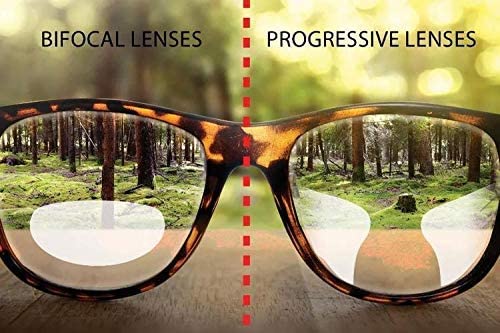PROGRESSIVE LENSES
Progressive or varifocal lenses provide a smooth transition from distance correction to near correction, eliminating segment lines and allowing clear vision at all distances, including intermediate, near and far. Progressive lenses are also known as no-line bifocal lenses. With these specialty lenses, the prescription at the top of the lens is different from that at the bottom of the lens. It differs from a bi-focal as there is a gradual shift in the prescription instead of a blunt line made in the lens. The very top part of the lens works well for distance. The bottom portion gets progressively stronger ending with the strongest portion at the very bottom for reading. A progressive lens allows the wearer to view all ranges of vision from near to far. Additionally, the lenses look identical to single vision lenses, with no lines, allowing others to only see your eyes!

What Are Progressive Lenses?
Progressive lenses are multi-focal lenses with three viewing areas: distance-, intermediate-, and near-vision. The primary viewing area in a standard progressive lens is for distance, with a smaller area at the bottom of the lens for near vision, and an even smaller area for intermediate vision in the middle. The clear viewing area is located in the central “corridor” of the lens. Since these areas are blended together, there’s a noticeable but expected blur when looking to the edges of the lens.

